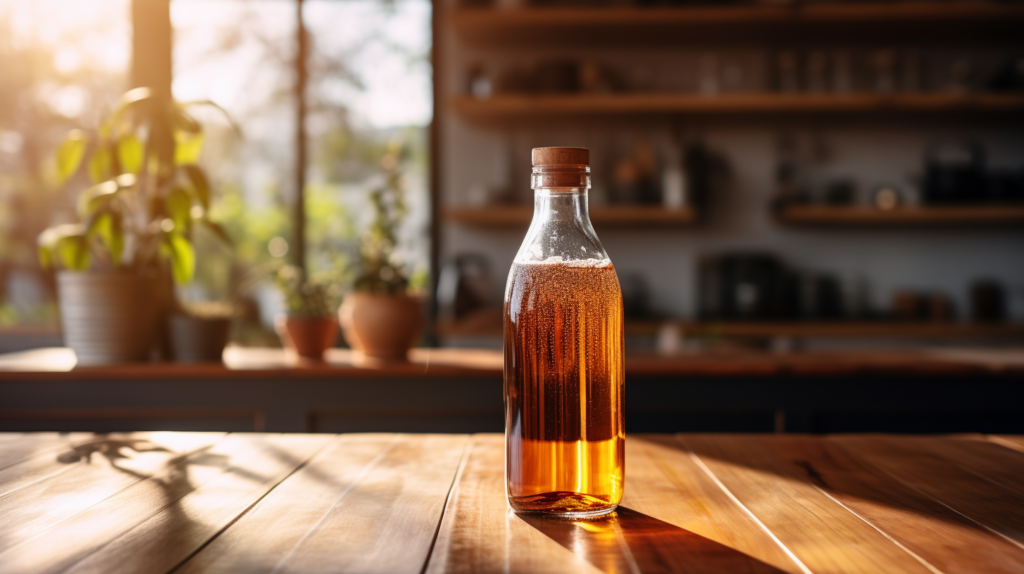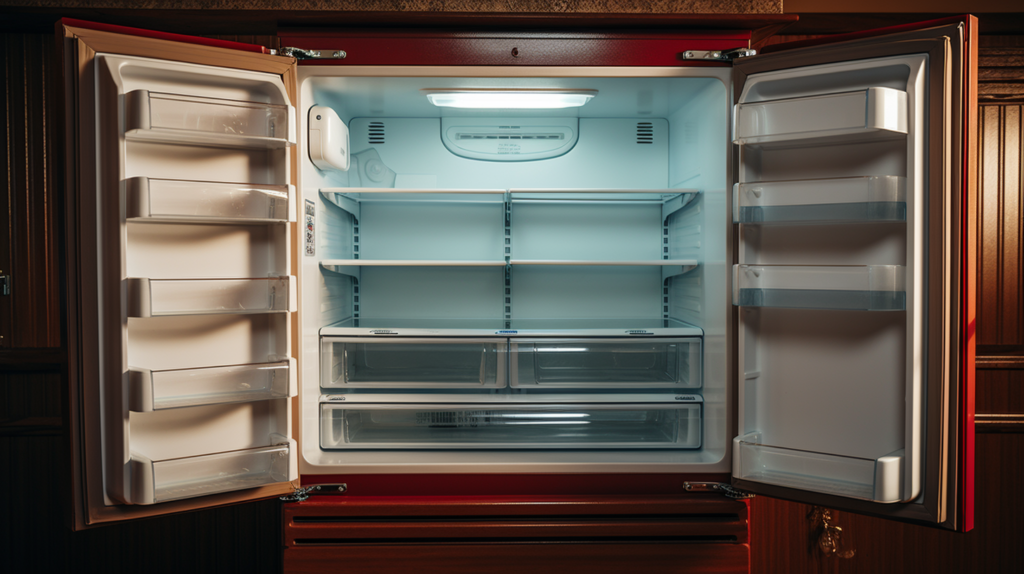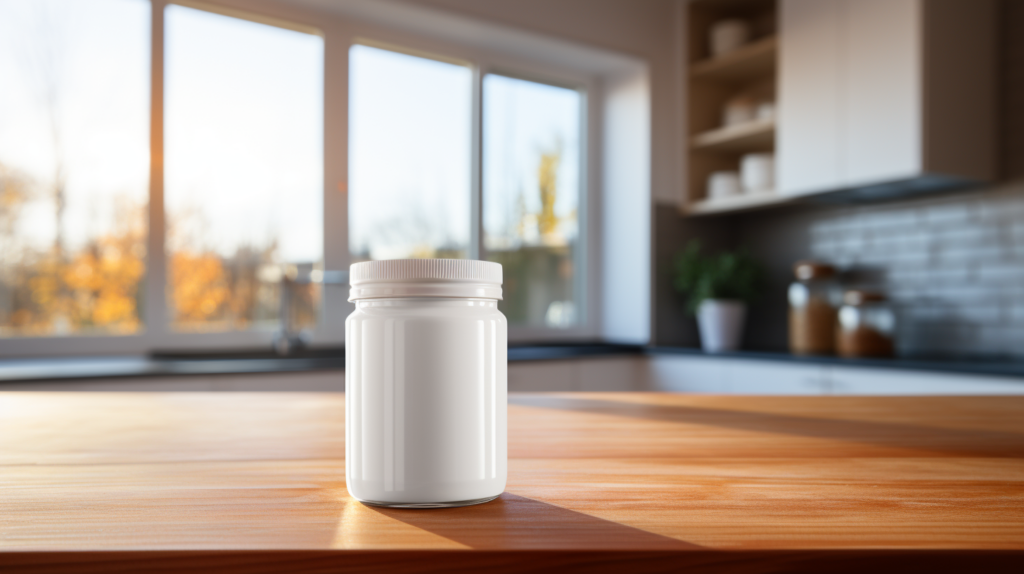If you’re someone who takes probiotics regularly, you may have wondered about the optimal temperature for these beneficial bacteria to thrive. Probiotics are fragile microorganisms that require specific environmental conditions to remain viable, and temperature is one of the most critical factors affecting their survival. Knowing the temperature range that allows probiotics to maintain their effectiveness can help you choose the right products and store them properly to reap their benefits.
In this article, we will explore the temperature sensitivity of probiotics, the impact of temperature on their viability, and other factors that affect their survival and efficacy. We will also provide practical tips on how to handle, store, and transport probiotic supplements and food products to ensure their freshness and potency.
Key Takeaways:
- Probiotics are sensitive to temperature and require specific environmental conditions to remain viable.
- Temperature is one of the most critical factors affecting probiotic survival and efficacy.
- The optimal temperature range for probiotics to thrive varies by species and strain.
- Proper storage and temperature control are essential to maintain the freshness and potency of probiotic products.
Understanding Probiotic Temperature Tolerance
Probiotics are living organisms that are sensitive to changes in their environment, including temperature. However, different strains of probiotics can have varying degrees of temperature tolerance.
Most probiotics are mesophilic, meaning they grow best at temperatures between 68-77°F (20-25°C). At temperatures below this range, their activity slows down, but they can still survive. Conversely, temperatures above this range can cause their viability to decline or even die off completely.

Understanding Probiotic Temperature Tolerance
The temperature tolerance of probiotics depends on their individual species and strains. For example, some probiotics, such as Lactobacillus and Bifidobacterium, are more heat-resistant and can survive temperatures up to 122°F (50°C) or higher for short periods.
Other strains, such as Streptococcus thermophilus, prefer higher temperatures and can only survive within a narrower range of 104-113°F (40-45°C).
It is important to note that even within the same species, different strains can have varying degrees of temperature sensitivity. Therefore, it is crucial to know the specific temperature requirements of the probiotic strain in question.
The Impact of Temperature on Probiotic Viability
Probiotics are live microorganisms that provide numerous health benefits when consumed in adequate amounts. However, their viability can be affected by a variety of factors, including temperature.
The survival of probiotics depends on their ability to withstand exposure to different temperatures. For example, some strains of probiotics are sensitive to heat and can die off when exposed to temperatures above a certain threshold, while others can survive high temperatures for extended periods.
| Probiotic Strain | Optimal Temperature Range (°C) |
|---|---|
| Lactobacillus acidophilus | 35-40 |
| Bifidobacterium bifidum | 37-42 |
| Streptococcus thermophilus | 42-46 |
The optimal temperature range for probiotics varies depending on the specific strain. However, in general, most probiotics prefer temperatures between 35-46°C (95-114°F) for survival and growth.
Factors such as storage conditions, shipping, and handling can also impact the viability of probiotics. Exposure to high temperatures during these processes can result in reduced potency and effectiveness of the probiotics.
It is important to note that the impact of temperature on probiotic viability is not solely determined by the temperature at which they are stored or transported. Other factors, such as the duration of exposure and the rate of temperature change, can also affect their survival.
Ultimately, proper temperature control is critical for maintaining the viability and efficacy of probiotics. This includes storing probiotics in a cool, dry place and avoiding exposure to direct sunlight or high temperatures. If you are unsure about the optimal storage conditions for your probiotic product, refer to the manufacturer’s instructions or consult with a healthcare professional.

Optimal Temperature for Probiotic Survival
Probiotics are live microorganisms that provide health benefits when consumed in adequate amounts. To ensure their effectiveness, it is important to understand the optimal temperature range in which probiotics can thrive and maintain their viability.
According to research, probiotics tend to survive best at temperatures between 39 and 77 degrees Fahrenheit (4-25°C). Within this range, some strains may have a narrower temperature tolerance while others can survive in a wider range of temperatures.
| Probiotic Strain | Optimal Temperature Range for Viability |
|---|---|
| Bifidobacterium animalis | 71.6-77°F (22-25°C) |
| Lactobacillus acidophilus | 39.2-104°F (4-40°C) |
| Streptococcus thermophilus | 86-106°F (30-41°C) |
The optimal temperature range may vary depending on the specific strain of probiotic bacteria. It is important to check the label or consult the manufacturer for specific storage instructions.
Exposure to temperatures outside the optimal range can rapidly decrease the viability and effectiveness of probiotics. Temperatures below the optimal range can cause the probiotics to become dormant, while temperatures above the range can kill them off.
Proper storage at the recommended temperature range is crucial to maintain the viability of probiotics and ensure their efficacy. This may include refrigeration or shipping in temperature-controlled environments, depending on the product and manufacturer’s instructions.
Probiotic Heat Resistance
Some probiotic strains are more heat resistant than others, meaning they can survive at higher temperatures without losing their viability or effectiveness. These strains are often found in foods or supplements that require processing or extended shelf life, such as freeze-dried probiotics.

One example of a heat-resistant probiotic strain is Bacillus coagulans, which can survive temperatures up to 60°C (140°F) and is commonly used in food products like baked goods or breakfast cereals. Another strain, Lactobacillus acidophilus DDS-1, has been found to maintain its viability even after exposure to temperatures up to 70°C (158°F).
| Heat-Resistant Probiotic Strains | Temperature Tolerance |
|---|---|
| Bacillus coagulans | Up to 60°C (140°F) |
| Lactobacillus acidophilus DDS-1 | Up to 70°C (158°F) |
It’s important to note, however, that not all probiotic strains have the same heat resistance capabilities. Some strains may start to lose their viability at much lower temperatures, and their efficacy may be significantly reduced if exposed to higher temperatures for extended periods of time.
When selecting probiotic products, it’s important to consider the specific strains included and their individual temperature requirements for optimal viability. Additionally, proper storage and handling techniques are essential for preserving the viability of heat-sensitive probiotics.
The Temperature Sensitivity of Probiotics
Not all probiotics are created equal when it comes to temperature sensitivity. Different strains have varying degrees of sensitivity to heat, which can affect their viability and potency. For example, certain probiotic strains can survive at temperatures as high as 122°F (50°C), while others may start to deteriorate at temperatures as low as 77°F (25°C).
It’s important to note that temperature sensitivity is not the only factor that affects probiotic viability. Other factors, such as moisture and exposure to light, can also play a role in their survival. Therefore, it’s essential to carefully consider and control these environmental factors to ensure that your probiotics remain effective.
Some probiotic strains are more resilient to temperature changes than others. For example, strains of the Lactobacillus and Bifidobacterium genera are typically considered to be more robust and heat-resistant than other types of probiotics. However, regardless of the strain, it’s important to maintain proper storage conditions to protect their viability.

If you’re unsure about the temperature sensitivity of your probiotic supplement or food product, it’s always best to check the label or consult with the manufacturer. This will help you determine the ideal storage conditions and temperature range for your particular product. By taking the time to understand the temperature requirements of your probiotics, you can ensure that they remain effective and provide the maximum health benefits.
The Temperature Effects on Probiotic Bacteria
Temperature has a significant impact on the viability and effectiveness of probiotics. When exposed to temperatures outside of their optimal range, probiotic bacteria can experience changes in their metabolic activity and cell structure, which can lead to a decrease in their ability to perform beneficial functions in the body.
Probiotic bacteria have a range of temperature tolerance, with some strains being more sensitive than others. Generally, the optimal temperature range for probiotic survival and function is between 72-85°F (22-29°C), but this can vary depending on the specific strain.
| Temperature Range | Effect on Probiotic Bacteria |
|---|---|
| Below Optimal Range | Slows metabolic activity, impairs cell function, and reduces viability over time. |
| Above Optimal Range | Accelerates metabolic activity, causes cell damage, and can result in probiotic death. |
| Extreme High Temperature | Instantly kills probiotic bacteria beyond a certain threshold, typically around 140-160°F (60-71°C). |
Overall, it is crucial to maintain proper temperature control when handling and storing probiotic products to ensure their viability and efficacy. This includes avoiding exposure to high temperatures during shipping, refrigerating as necessary, and following proper storage guidelines outlined by manufacturers.

Heat Threshold for Probiotic Mortality
Every probiotic strain has a specific heat threshold beyond which it cannot survive. This threshold varies depending on the strain’s individual characteristics, including its structure, metabolism, and resilience to environmental stressors. Typically, probiotics begin to die off at temperatures exceeding 115 degrees Fahrenheit (46 degrees Celsius).
However, it’s worth noting that some probiotic strains have been found to withstand higher temperatures, up to 140 degrees Fahrenheit (60 degrees Celsius), for short periods of time. Nonetheless, sustained exposure to temperatures above their heat threshold will eventually cause probiotics to lose their viability.
Exceeding the heat threshold can have significant implications for the efficacy of probiotic products. For instance, consuming probiotics that have been exposed to high temperatures may result in reduced bacteria counts and a weaker therapeutic effect. Additionally, probiotics that have been subjected to extreme heat may also develop undesirable characteristics, such as a sour taste or unpleasant odor.
To avoid compromising the viability of probiotics, it’s crucial to store them within the recommended temperature range and avoid exposing them to heat sources such as direct sunlight or hot surfaces. Proper storage is particularly important when shipping or transporting probiotic products, as exposure to high temperatures during transit can cause irreversible damage to the bacteria.
Ensuring that probiotics are kept at the optimal temperature range is key to maintaining their viability and effectiveness. In the next section, we’ll delve into the temperature range in which probiotics can function best.
Temperature Range for Probiotic Function
Probiotics are living microorganisms that require specific temperature conditions to perform their beneficial functions in the body. The optimal temperature range for probiotic function varies depending on the strain and species, but generally falls between 32°F (0°C) to 122°F (50°C).
At temperatures below the optimal range, probiotics may become dormant and their efficacy may decrease, while temperatures above the range can lead to cell death and render them ineffective. Therefore, it is crucial to ensure that probiotics are stored and handled within their recommended temperature range to maintain their viability.

If you are consuming probiotics through food products such as yogurt or kefir, it is advisable to check the product label for storage instructions and consume before the expiration date. For probiotic supplements, it is best to store them in a cool, dry place away from direct sunlight and heat sources.
It is also important to note that not all probiotics are created equal, and some may be more sensitive to temperature than others. Therefore, it is essential to choose high-quality probiotics from reputable brands and consult with your healthcare provider on the appropriate strains and dosages for your needs.
Temperature Impact on Probiotic Efficacy
If you want probiotics to work effectively, temperature is a crucial factor to consider. Fluctuations in temperature can impact the viability and potency of probiotics, as live bacteria are sensitive to heat and cold. Transporting, storing, and handling probiotic products within the correct temperature range is essential to maintain their effectiveness.
According to studies, the optimal temperature range for most probiotics is between 35°F to 45°F (2°C to 8°C), which is the temperature range of a refrigerator. Probiotics can tolerate slightly higher or lower temperatures, but extended exposure to temperatures outside of this range can damage the bacteria and render them ineffective.
High temperatures can also activate the bacteria, leading to higher metabolic activity and faster depletion of the available nutrients. Similarly, low temperatures can slow the metabolic rate, causing the bacteria to go into dormancy and lose their ability to perform their beneficial functions.
To preserve the efficacy of probiotic supplements or food products, it’s essential to store them in a refrigerator and avoid exposing them to high temperatures for extended periods. Be sure to check the label for storage instructions and follow them carefully.
Probiotic supplements and food products that have been exposed to high temperatures should be discarded as they may no longer be effective. This is especially important for heat-sensitive probiotics, such as those found in live culture yogurt, kefir, and other fermented foods. These products should be kept refrigerated and avoided exposure to heat as much as possible.
When purchasing probiotic products, pay attention to the packaging and shipping methods. Choose reputable brands that use temperature-controlled packaging and shipping to prevent heat exposure during transportation.

Proper Storage and Temperature Control
To maintain the viability of probiotics, proper storage and temperature control are crucial. Here are some tips to help you store your probiotic products:
- When purchasing probiotics, ensure the product is of high quality, and check for the expiry date.
- Store your probiotics in a cool, dry place away from sunlight.
- Refrigerate your probiotics if the label recommends it.
- If you’re traveling with your probiotics, store them in an insulated container with a cold pack.
- If you’re ordering probiotics online, choose a shipping option with temperature control to ensure that the product arrives in the best possible condition.
Remember, temperature fluctuations can have a significant impact on the efficacy and potency of probiotics. Taking the necessary steps to store and handle your probiotic products properly is vital to ensure their maximum benefit to your health.

Best Practices for Handling Heat-Sensitive Probiotics
If you are dealing with probiotics that are known to be sensitive to heat, there are a few best practices you should follow to ensure their viability and efficacy.
1. Keep Them Cool
First and foremost, heat-sensitive probiotics should be stored in a cool place. This means keeping them in the refrigerator or even the freezer, depending on the specific product. When transporting or traveling with probiotics, make sure to use a cooler bag or insulated container to maintain their temperature.
2. Avoid Exposure to Heat and Light
Heat-sensitive probiotics can be damaged by exposure to heat and light, so it is important to keep them away from direct sunlight and sources of heat such as ovens, stoves, or even car trunks on hot days. Additionally, avoid leaving probiotics in hot or humid environments for long periods of time, such as in a car or at the beach.
3. Check Expiration Dates
Like any supplement or medication, probiotics have expiration dates that indicate the period during which they can be safely consumed. Make sure to double-check the expiration date before buying or consuming probiotics to ensure that they are still effective and safe for use.
4. Follow Storage Instructions
Probiotic supplements and food products often come with specific storage instructions, such as refrigeration requirements or warnings about exposure to moisture. Be sure to read and follow these instructions carefully to ensure that you are storing the probiotics properly.
By following these best practices, you can protect the health benefits and potency of heat-sensitive probiotics. Remember, the proper storage and handling of probiotics is crucial for maintaining their efficacy and benefiting your health.

The Influence of Temperature on Packaging
Aside from temperature control during storage and transportation, packaging also plays a critical role in maintaining the viability of probiotics. Heat-sensitive products require careful consideration when it comes to choosing the right materials and design to ensure the temperature remains within optimal ranges.
For instance, some probiotic supplements may come in airtight, opaque containers that protect the contents from exposure to light and air, which can also impact their effectiveness. Other products, such as yogurt with live cultures, may utilize insulated packaging and require refrigeration throughout the supply chain to prevent temperature fluctuations.
To help determine whether a product is suitable for your needs, always check the packaging instructions and look for details on recommended storage temperatures and handling instructions.
While proper storage and packaging can help ensure the viability of probiotics, it’s also important to be mindful of the manufacturing process and other factors that can affect their quality. By staying informed and taking proactive steps to maintain the integrity of these beneficial microorganisms, you can experience the full range of health benefits they offer.

Impact of Temperature During Manufacturing
When it comes to probiotic supplements and food products, temperature control during manufacturing is critical to ensuring their viability and quality. Exposing probiotics to elevated temperatures can cause significant damage to their structure and function, rendering them ineffective.
Manufacturers must take great care to regulate the temperature during every stage of production, from the initial culture preparation to the final packaging. This involves monitoring the temperature of equipment and storage areas, as well as conducting regular quality checks on the final products.
In addition, humidity levels and exposure to light can also affect the viability of probiotics during the manufacturing process. Moisture can promote the growth of unwanted microorganisms, while exposure to light can cause damage to the probiotic cells.
Therefore, manufacturers must implement robust quality processes to ensure that their probiotic products are manufactured under optimal conditions and meet the required industry standards.
Make sure you choose probiotic products from reputable manufacturers who follow strict quality control procedures to safeguard the potency and effectiveness of their probiotics.
Other Factors Affecting Probiotic Viability
While temperature is a critical factor in maintaining probiotic viability, other environmental conditions can also impact their effectiveness. Exposure to moisture, for example, can cause probiotics to degrade and lose their potency. It’s essential to keep probiotics dry and away from humid environments.
Light exposure can also reduce the viability of probiotics. UV light in particular can be damaging, so probiotic products should be stored in dark, opaque containers or packaging to minimize their exposure to light.
In addition, the processing and handling of probiotics can affect their viability. Supplement manufacturers must follow strict guidelines to ensure their products are produced in a clean and controlled environment. Proper handling and shipping are also critical to prevent damage to the delicate microorganisms.

Overall, it’s essential to consider all of these factors in addition to temperature to ensure your probiotics are as effective as possible.
Conclusion
In conclusion, understanding the temperature requirements for probiotic survival and efficacy is crucial for maintaining their potency and effectiveness. Probiotics are sensitive to temperature, and exposing them to conditions outside of their temperature range can significantly impact their viability and health benefits.
To ensure optimal probiotic performance, it is important to follow proper storage and temperature control practices. Refrigeration is recommended for most probiotic supplements and food products, and shipping methods should also consider temperature control. Additionally, handling heat-sensitive probiotics, such as live culture yogurt, requires extra care and attention.
Manufacturing processes for probiotics should also maintain temperature control to ensure the viability and quality of the final product. Packaging for probiotic products also needs to be considered, as exposure to temperature extremes can significantly impact their longevity.
Aside from temperature, other factors such as moisture and exposure to light can also impact probiotic viability and effectiveness. Therefore, it is important to follow all recommended storage and handling practices to ensure that probiotics maintain their beneficial properties.
In summary, knowing the optimal temperature range for probiotics and following proper storage and handling practices can help maximize their health benefits for you.
FAQ
Q: At what temperature do probiotics die?
A: Probiotics are sensitive to temperature, and their survival depends on various factors. Here are some key facts to know about the temperature sensitivity of probiotics:
- Probiotics are microorganisms that can be killed or deactivated by heat. Temperatures above 115 degrees Fahrenheit (46 degrees Celsius) are generally considered harmful for probiotics.
- Certain strains may have different temperature thresholds. Some can survive at higher temperatures, while others may be sensitive to anything above room temperature.
- Extended exposure to high temperatures, like those encountered during cooking or baking, is likely to kill most probiotics. Similarly, freezing can also reduce the activity and effectiveness of these beneficial microbes.
- Probiotic products such as supplements and yogurts are generally stored at cool temperatures (under refrigeration) to maximize their shelf life.
- Ideally, probiotics should be stored between 36 and 46 degrees Fahrenheit (2 – 8 degrees Celsius) to ensure their maximum effectiveness and longevity.
Always refer to the instructions on the packaging of your probiotic product for the best practices regarding storage and usage. For further advice, consult your healthcare provider.
Q: What is probiotic temperature tolerance?
A: Probiotic temperature tolerance refers to the range of temperatures at which probiotics can survive. Understanding this concept is crucial for maintaining their effectiveness.
Q: How does temperature impact probiotic viability?
A: Temperature can significantly affect the viability and survival of probiotics. Factors such as heat sensitivity and exposure duration play a role in determining their ability to thrive.
Q: What is the optimal temperature for probiotic survival?
A: Probiotics thrive within a specific temperature range. This section explores the ideal temperatures within which probiotics can maintain their effectiveness and provide health benefits.
Q: Can probiotics withstand higher temperatures?
A: Some probiotic strains have a higher heat resistance, allowing them to survive in harsher conditions. Discover the potential of these strains for withstanding elevated temperatures.
Q: Do probiotic strains have different temperature sensitivities?
A: Different probiotic strains exhibit varying degrees of temperature sensitivity. This section provides insights into how this sensitivity can impact their viability and effectiveness.
Q: How does temperature affect probiotic bacteria?
A: Temperature plays a significant role in the metabolism and structure of probiotic bacteria. Learn more about the specific effects that temperature fluctuations can have on these beneficial organisms.
Q: What is the heat threshold for probiotic mortality?
A: There is an upper temperature limit beyond which probiotics cannot survive. Understanding this threshold is important to prevent the loss of probiotics’ beneficial properties.
Q: What is the temperature range for probiotic function?
A: Probiotics require a specific temperature range to perform their beneficial functions. Discover the optimal temperature range for ensuring the effectiveness of probiotic products.
Q: How does temperature impact probiotic efficacy?
A: Temperature fluctuations can compromise the efficacy and potency of probiotics. This section highlights the importance of proper storage conditions to maintain the effectiveness of probiotic products.
Q: What are the best practices for handling heat-sensitive probiotics?
A: Some probiotic supplements or food products are particularly sensitive to heat. Here are some tips on how to handle and store these heat-sensitive probiotics properly.
Q: How does temperature influence packaging for probiotic products?
A: Temperature considerations are vital in the design and selection of packaging for probiotic products. Understand the influence of temperature on packaging to ensure the longevity of probiotics.
Q: What is the impact of temperature during probiotic manufacturing?
A: Temperature control is crucial during the manufacturing process of probiotics. This section discusses the importance of maintaining appropriate temperatures to preserve probiotic viability and quality.
Q: What other factors can affect probiotic viability?
A: Apart from temperature, other factors like moisture and exposure to light can also impact the viability and effectiveness of probiotics.
Q: Conclusion
Understanding the temperature requirements for probiotic survival is essential for maintaining their viability and efficacy. Proper storage and temperature control are crucial to ensure that probiotics deliver their beneficial effects.














